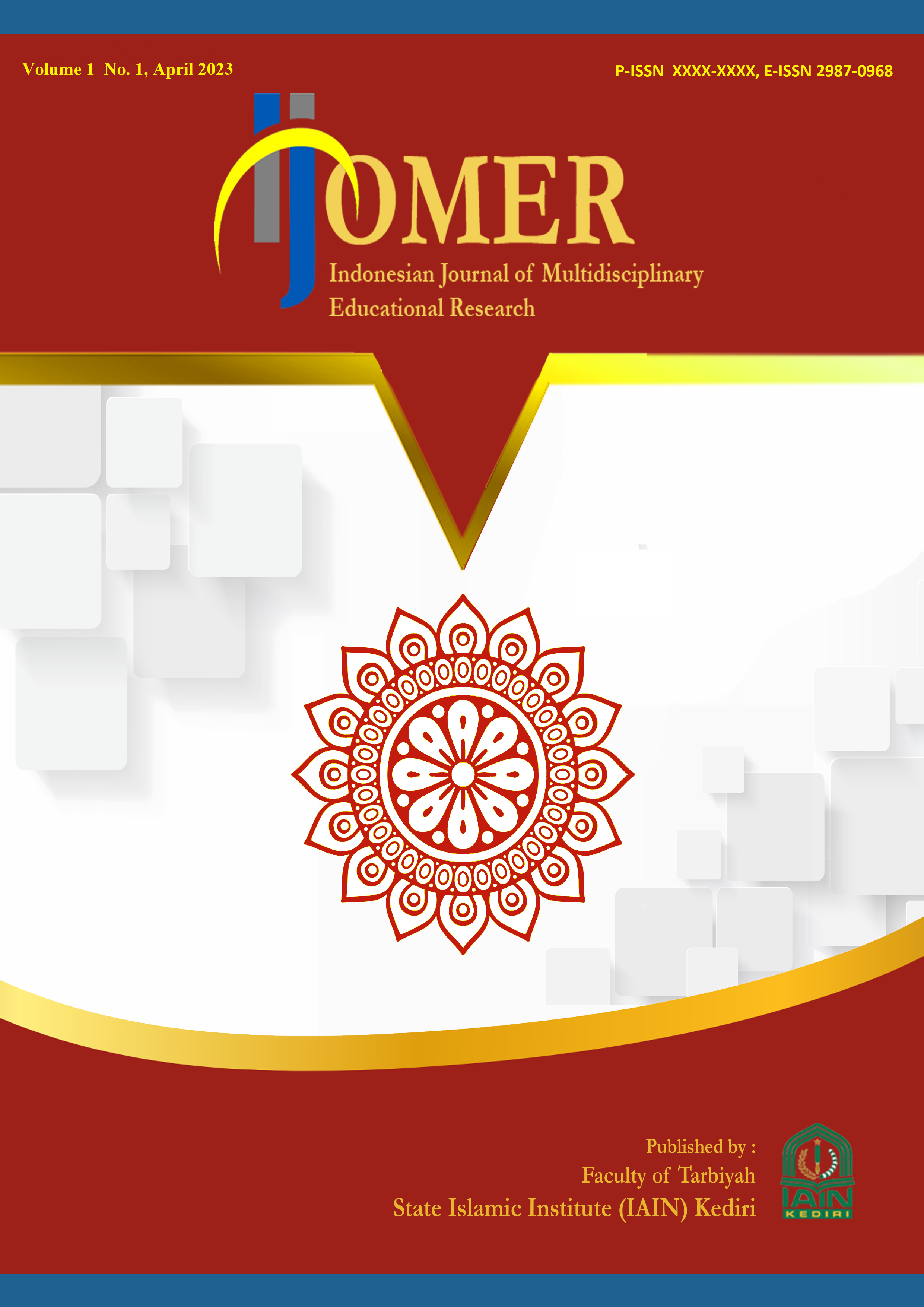The Practice of Vocabulary Drilling Method Used in Teaching and Learning Speaking at Mazroatul Lughoh Islamic Boarding School
DOI:
https://doi.org/10.30762/ijomer.v2i2.1052Keywords:
Speaking Skill, Teaching Speaking, Drilling Vocabulary MethodAbstract
This study aimed to analyze the learning using the drilling vocabulary method in teaching speaking at the Egypt class of Mazroatul Lughoh Islamic Boarding School Pare Kediri. The approach of this study was qualitative research. It involved me as the researcher, the education of Mazroatul Lughoh, and eight students of the Egypt Class of Mazroatul Lughoh Islamic Boarding School Pare Kediri. The steps of this study were survey, planning the actions, implementing and observing the actions, and reflecting on the actions done. The data of this study was qualitative. The qualitative data were obtained by observing the teaching and learning process. The data were collected in the form of field notes and questionnaire transcripts. To ensure trustworthiness, investigators, time, and theoretical triangulation were used. Democratic, process, outcome, catalytic, and dialogic validity were also employed to meet the validity and reliability of the data. The research findings showed that the drilling vocabulary method in teaching speaking had many benefits in learning to speak in the classroom. The drilling vocabulary method constituted a method that applied repetition in pronouncing some vocabulary with the correct pronunciation and articulation. It also gave the Indonesian translation and practice with the topic related to the vocabulary.
Downloads
References
Babbie, E.R. 1990. Survey Research Methods. Wadsworth Publishing Co., Belmont.
Bailey, Kathleen M. 2000. Practical English Language Teaching Speaking. New York: The McGraw. Hill Companies, 25
Ciesielska, M., and Jemielniak, D. Qualitative Methodologies in Organization Studies: Volume II: Methods and Possibilities, 2018
Creswell, J W. 2012. Educational research: Planning, conducting, and evaluating quantitative and qualitative research (4th ed.). Boston, MA: Pearson
Creswell, J. 2002. Educational research: Planning, conducting, and evaluating Quantitative and Qualitative research. Upper Saddle River, NJ: Merrill Prentice Hall.
Harmer, Jeremy. 2001. The Practice of English Language Teaching. Harlow: Pearson Education
Hayriye, Kayi. 2006. Teaching Speaking: Activities to Promote Speaking in a Second Language. Nevada: University of Nevada
Henry. Some Effects of the Nature and Frequency of Vocabulary Instruction on the Knowledge and Use of Words. Reading Research Quarterly, 2006, 20, 522-535.
Hussain, Shafaat. Teaching Speaking Skills in Communication Classroom on International Journal of Media, Journalism and Mass Communications (IJMJMC) Volume 3, Issue 3, 2017, PP 14-21, available at http://dx.doi.org/10.20431/2454-9479.0303003 www.arcjournals.org
Jyotsna, M&Rao. 2009 Methods of Teaching English, Guntur: Sri Nagarjuna Publishers
Nunan, D. 2003. Practical English Language Teaching. Boston: McGraw Hill
Nunan, D. 2005. Practical English Language Teaching. New York: McGraw Hill
Raj Arora, Charles Stoner, A mixed method approach to understanding brand personality, on the journal at emerald.com, 2009
Setiyadi, A. B. 2006. Teaching English as A Foreign Language. Yogyakarta: Graha Ilmu
Sugiyono. 2015. Metode Penelitian Kombinasi (Mix Methods). Bandung: Alfabeta
Thornbury, Scott. 2005. How to Teach Speaking. England: Pearson Education Limited
Xinghua. Psychological Problems of Middle-School Students in English Learning, 2007, availableat:http://joyward.blog.163.com/blog/static/3494942520076126461 4847/.
Yang, Zhihong. 2000. Learning Words. London: English Teaching Forum
Downloads
Published
How to Cite
Issue
Section
License
Copyright (c) 2024 Fakultas Tarbiyah, Institut Agama Islam Negeri Kediri

This work is licensed under a Creative Commons Attribution-ShareAlike 4.0 International License.







